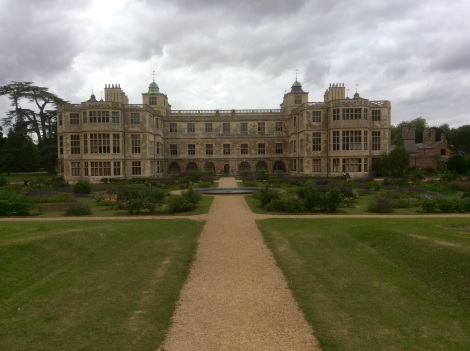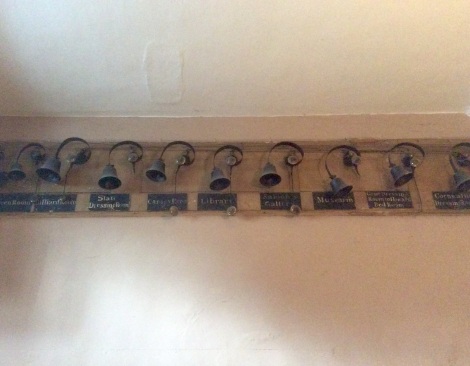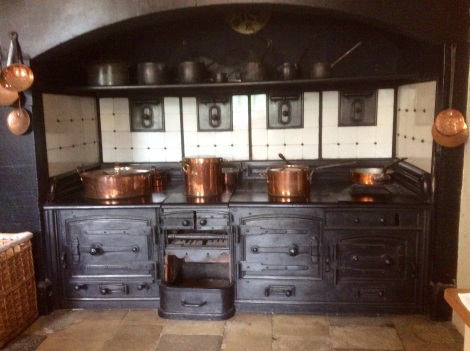There are multitudes of beautiful manors, gardens, historic forts, castles and priories all over Great Britain – it’s hard to choose which ones to visit and which to pass over, but one can’t see them all!
English Heritage is the custodian of over 400 historic monuments, buildings, and sites and we purchased a 2-person £60 Visitors Pass with 16 days of unlimited access. It became a Scavenger Hunt for us to visit as many of the various sites near us. All of the sites mentioned in today’s post plus the Hadrian’s Wall sites of Birdoswald and Homesteads, the York Cold War Bunker and Clifford’s Tower in York (from last week’s post) are under the English Heritage custodianship. The entrance fees for 2 to these sites would have cost £107.60 so we’re content that we got our money’s worth!
Once upon a time…
Burgh Castle aka “Gariannonum”
Upon arriving at Burgh Castle I was surprised to find the ruins of a “fort of the Saxon Shore” – one of the many 3rd and 4th century forts the Romans constructed along the southeast coast of Britannia and the coasts of Belgium and France for protection from the raiders and piracy.
“Gariannonum” is considered the best preserved Roman monument in all of England!

It’s defensive walls have survived 1700 years – almost their original full height with projecting bastions sited at the corners of the fort and at intervals along the walls, many of which have tipped over. The west wall of the fort has vanished, probably collapsed down the steep slope into the marshy reeds below. A view of the fort from what would’ve been a deep-water harbor and quay (above).

The walls were once faced in flint and tile which has mostly been taken away to be used in other buildings.
Orford Castle
King Henry II built this castle when he realized that his land barons were more powerful than him and needed to guard his eastern port against foreign mercenaries coming to their aid against him. He also seized castles from his opponents.

Various chambers and a chapel are built in the 3 square turrets constructed around a polygonal tower housing the main halls with chimney flues sandwiched in the walls providing heat. Originally there was also a walled bailey (courtyard) attached to the castle.

Surviving records from the 1160s detail the £1400.16 expense to build Orford Castle. Visitors are allowed to explore the basement with its vital well, lower and upper main halls, and the rooftop.

This amazingly well preserved structure from the 1160s is a simple, yet unique design and had sinks (above) and latrines that drain outside the castle walls (below) as well as a handy urinal in the Constable’s quarters!
The main halls are only 30′ across making it feel, in my humble opinion, homey and cozy – as far as castles go. In the 1330s it was passed to Robert Orford.
Framlingham Castle
Hugh Bigod, the 1st Earl of Norfolk, built the first stone castle at Framlingham which King Henry II confiscated in the 1150s to punish him. Back in favor with the King, the castle was rebuilt by Hugh Bigod’s son only to be unsuccessfully besieged against by King John seeking revenge on his Barons after being forced to sign the Magna Carta. John Howard inherited the castle and became the 1st Howard Duke of Norfolk.
The colorful cast of characters stepping into England’s dramatic story make repeated appearances. One of these is the powerful Howard Family. (Anne Boleyn and Catherine Howard were of the Howard Family, both married to and ultimately beheaded by, King Henry VIII.)
Inherited by Mary Tudor (“Bloody Mary” daughter of King Henry VIII), Framlingham is where she mustered her supporters in 1533 after the death of her half brother King Edward VI in her claim for the crown against Queen Jane Gray (who ruled only 9 days). As Queen, Mary restored Framlingham to the Howards. Later, Thomas Howard, 4th Duke of Norfolk was executed by his cousin, Queen Elizabeth I, (another of King Henry VIII’s daughters) because he plotted to wed Mary, Queen of the Scots and make her Queen of England and Scotland. Framlingham was returned to the Howards by King James I (the son of Mary, Queen of Scots) but they had to sell it to pay their many debts.

Once home to some of the most dominant people in Tudor England, Framlingham was transformed from a Power House to Poor House when it became a sanctuary for the poor in the 17th century.

An interesting feature are the attractive red brick chimneys, each uniquely different from the other. These are the oldest surviving 12th-century Tudor chimneys in the country. They may have been added at a later date to make the castle look more like a home rather than a military keep as some of them are purely decorative and never were functional.

Visitors can walk the 800-year-old castle stone ramparts which by design had large spans bridged by wooden bridges, which in case of enemies having scaled the walls, could be destroyed, and stopping the invader’s progress.
Audley End House and Gardens

Audley End is a stunning country mansion with a royal history.

Audley End at one time was one of the largest mansions in England, but only 1/3 of that home exists today.
King Henry VIII confiscated (surprise!) the land from the Church and gave it to his Lord Chancellor, Thomas Audley. Eventually it was inherited by his grandson Thomas Howard (Oh! We’ve heard about ths guy before) who was Lord Treasurer to King James I (Remember? Mary, Queen of Scots’ boy) who rebuilt the house on a massive scale in the early 1600s in hopes that he could entice the King to visit. A very expensive bed was purchased for the princely sum of $40,000 in today’s money, in which the King never slept.

And bells for summoning staff just like in Downton Abbey!

I love learning about how things are done the behind-the-scenes. Visiting the Coal Room I learned how the footmen would fill coal buckets in order to lay a fire in each room of the house and where hot water was heated to be hand carried to the rooms for bathing.
In 1668, King Charles II bought the home, but never completely paid for it. When it was in need of repairs he gave it back to the original family whose heirs lived in it until 1948.
When Your Home is Not a Castle

Many of the churches of East Anglia were similarly constructed. The stone is what I would call a thunder egg, a volcanic rock that when cut has agate-like qualities that are often polished to high sheen.
And like all good stories, we know, they lived happily ever after.
The End
Dear friends, the last 10 days we have been enjoying swimming, siestas, and sunny skies near Granada, Spain. Next time I’ll Meet You en la Mañana.








Nice post showing off some of England’s lesser known locations
LikeLiked by 1 person
Thank you! Glad you stopped by.
LikeLike
No problem, enjoyed the imagery too. Please check out blog when you have some free time
LikeLike
Hmmm…..that’s some information…supported by lovely images…Great post
LikeLiked by 1 person
Thank you for saying so and I appreciate your stopping by to read!
LikeLiked by 1 person
Absolutely….will be back for more
LikeLike
I still love reading about all of your adventures and the photos are a great visual for putting me there along with you. Thank you for this great tour of areas I will probably never visit.
I didn’t see a picture of Fred. How did that go for you?
Love, Debbie
LikeLike
Fred was a gentle giant, so well behaved and undemanding. Thanks for the reminder – I’ll look to see if I can find a picture of him. We’re caring for 2 dogs and a cat now. Enjoying the benefits of home and pets without bearing all the responsibility of home and pet ownership!
LikeLike
Well, I’m all caught up! After reading from start to finish (at least for this moment in time), I can most definitely state that we have much in common. In fact I almost think we could write each other’s blog posts at times 🙂 Can’t wait to learn more about your house sitting experiences. I have researched that option a couple of times, but only briefly. I think we will look further into that option. Question #1 – Are your monthly expenses per person or total for both of you? I’m so impressed how you have kept track of every $ spent along the way. Question #2 – What camera are you using? I’m sure looking forward to reading more of your excellent posts!
LikeLike
Yes, we are budget travelers; all expenses are for both of us and not per person. I’m thankful that by staying long term in most places (and housesitting) our expenses can be closer to what the locals live on!
On this trip (starting February 2015) most of my photos are taken with my iPad mini and on occasion with my old iPhone 4s. I never replaced our camera that was stolen while folding clothes at a Barcelona laundromat in 2012.)
LikeLike
I am so impressed that you have consistently maintained such a tight budget, yet have seen and done so much. Sorry to hear that you had a camera stolen. I would be heartbroken if that happened to me.
LikeLike
Oh, it was tough. It was stolen on our last day. We lost everything except what was on the cell phone. Now, with the cloud supposedly we are protected!
LikeLike